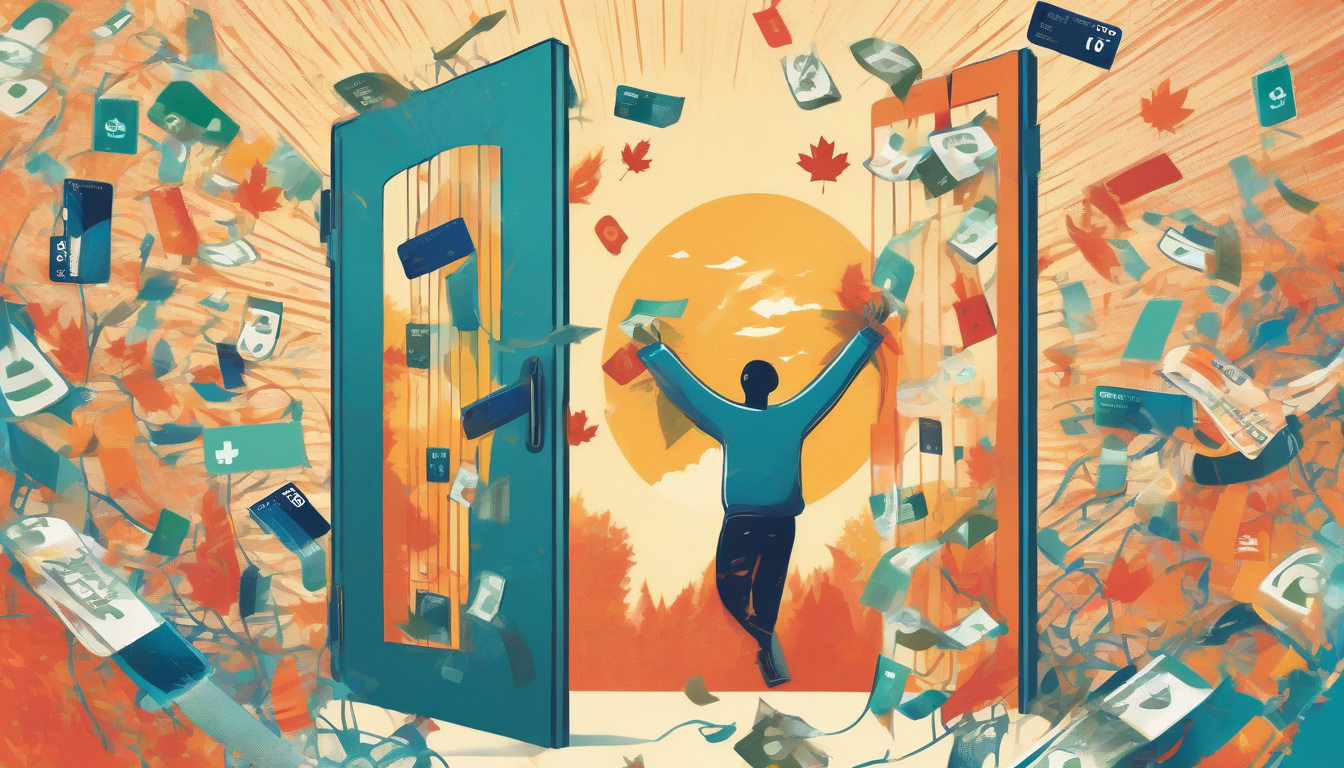Unlocking Freedom: Effective Strategies for Credit Card Debt Relief
In today’s fast-paced world, credit card debt has become an all-too-common challenge for many individuals. With enticing offers and easy access to credit, it’s easy to accumulate debt before realizing the long-term consequences. This article, titled ‘Unlocking Freedom: Effective Strategies for Credit Card Debt Relief,’ aims to provide you with a comprehensive guide to understanding credit card debt and the effective strategies available for relief. We will explore various DIY techniques for managing your debt, delve into professional debt relief options, and emphasize the critical role of budgeting. Moreover, we will discuss how to maintain your financial health after achieving debt relief, ensuring you can enjoy freedom from financial worry. Whether you’re grappling with overwhelming debt or looking to stay ahead of potential pitfalls, this article is designed to offer valuable insights and practical steps toward a debt-free future.

Key Takeaways
- Understanding the root causes of credit card debt is crucial for effective management.
- DIY strategies can empower individuals to take control of their credit card debt.
- Professional debt relief options can provide significant support for those overwhelmed by debt.
- Budgeting plays a pivotal role in successfully achieving and maintaining debt relief.
- Post-debt relief, adopting healthy financial habits is essential for long-term financial freedom.
Understanding Credit Card Debt: Causes and Consequences
Credit card debt is a common financial challenge faced by many individuals, often resulting from a combination of overspending, unforeseen expenses, and an inability to effectively manage repayment. Understanding the causes of credit card debt is crucial for finding effective relief solutions. One major factor is lifestyle inflation, where individuals increase their spending as their income grows, often relying on credit cards to maintain a certain standard of living. Additionally, unexpected expenses such as medical bills or car repairs can lead to reliance on credit cards, particularly if an emergency fund is lacking.
The consequences of accumulating credit card debt can be severe. High-interest rates compound the debt quickly, making it difficult for borrowers to pay off their balances, potentially resulting in a cycle of debt that feels impossible to escape. Furthermore, carrying high balances can negatively impact one’s credit score, leading to increased difficulty in securing loans or obtaining favorable interest rates in the future.
Seeking credit card debt relief becomes paramount for those facing these challenges. Options may include debt consolidation, negotiating with creditors, or exploring debt management programs. Each option carries its own set of implications, which should be carefully considered based on individual financial situations.
DIY Strategies for Managing Credit Card Debt
Managing credit card debt can often feel overwhelming, but with the right DIY strategies, achieving credit card debt relief is entirely possible. Start by assessing your current financial situation—take a thorough inventory of all debts, interest rates, and monthly payments. This will help you prioritize which debts to tackle first. Consider employing the debt snowball method, where you focus on paying off the smallest balance first while making minimum payments on others. This method not only helps reduce the number of accounts you owe but also provides a psychological boost as you eliminate debts. Another effective strategy is debt consolidation, which involves combining multiple debts into a single loan with a lower interest rate, making it easier to manage payments. Additionally, negotiate with your credit card companies; often, they are willing to work with customers facing financial hardships by lowering interest rates or establishing payment plans. Taking advantage of budgeting tools and apps can also keep you on track, helping you allocate funds for debt repayment effectively. Don’t forget to assess your spending habits—cut unnecessary expenses and redirect those funds towards your debt repayments. Lastly, consider utilizing extra income sources such as freelance work, selling unused items, or even starting a side business to further accelerate your debt relief journey. Remember, consistent efforts can lead to significant progress in overcoming credit card debt.
‘The only way to get out of debt is to stop borrowing money.’ – Anonymous

Exploring Professional Debt Relief Options
### Exploring Professional Debt Relief Options
When it comes to alleviating credit card debt, exploring professional debt relief options can be a pivotal step toward financial stability. Consumers often find themselves overwhelmed by high-interest rates and accumulating balances that seem insurmountable. Thankfully, several solutions are available that can help manage or even eliminate credit card debt efficiently.
1. Credit Counseling Services: These nonprofit organizations offer guidance on managing debt, budgeting, and understanding financial options. Credit counselors can help you develop a personalized action plan that may include a debt management program (DMP). By negotiating with creditors, they can often secure lower interest rates and create a structured repayment plan that works within your budget.
2. Debt Consolidation: This approach involves taking out a single loan to pay off multiple debts, simplifying your payments into one manageable monthly figure. Consolidation loans can have lower interest rates than most credit cards, potentially reducing your overall payment amounts. However, it’s important to assess whether the terms of the consolidation loan are favorable compared to existing debts.
3. Debt Settlement: In cases of severe financial distress, debt settlement may be an option. This involves negotiating with creditors to pay a lump sum that is less than the total owed, effectively settling the debt for a reduced amount. While this can be a tempting solution, it’s essential to consider the potential impact on your credit score as well as any potential tax liabilities on forgiven debt.
4. Bankruptcy: As a last resort, declaring bankruptcy can offer a way to discharge credit card debt, although it comes with significant long-term consequences. Types of bankruptcy, such as Chapter 7 or Chapter 13, vary in how debt is handled. It’s crucial to consult with a qualified bankruptcy attorney to navigate this complex process and understand the implications.
It’s advisable to research and compare professional debt relief options before making a decision. Each option carries its benefits and drawbacks, and what works for one person may not be suitable for another. Therefore, engaging with financial experts can provide personalized advice tailored to your unique situation. Ultimately, understanding all avenues of credit card debt relief empowers individuals to take control of their financial future.
The Role of Budgeting in Debt Relief
### The Role of Budgeting in Debt Relief
Budgeting serves as a critical foundation for anyone seeking credit card debt relief. Understanding how to effectively allocate your income can empower individuals to regain control over their finances and eliminate debt more efficiently.
At its core, budgeting involves tracking your income and expenses to create a financial plan. This process is essential for recognizing spending patterns, identifying areas where you can cut costs, and developing a strategy to pay down debt. For those grappling with credit card debt, a well-structured budget can serve as a roadmap to financial freedom.
To begin the budgeting process, start by listing all sources of income, including salaries, bonuses, and any additional earnings. Next, categorize your monthly expenses into fixed (like rent and utilities) and variable (such as entertainment and dining out). This categorization helps highlight unnecessary expenditures that can be trimmed back.
One effective method of budgeting is the zero-based budget, where every dollar is assigned a specific purpose. This means that income minus expenditures equals zero at the end of the month, ensuring every cent is accounted for. By implementing this method, you can allocate a designated amount towards credit card payments each month, significantly accelerating your path to debt relief.
Moreover, budgeting allows you to set realistic financial goals, whether that involves paying off specific credit cards faster or establishing an emergency fund to prevent future debt accumulation. Tracking your progress regularly can keep you motivated and accountable.
In summary, budgeting is not just about limiting spending; it’s about strategically managing your finances to facilitate credit card debt relief. By establishing a concrete budget, anyone can take the necessary steps to fulfill their financial obligations and work toward a debt-free future.

Maintaining Financial Freedom After Debt Relief
Maintaining Financial Freedom After Debt Relief
After experiencing credit card debt relief, many individuals find themselves at a crucial crossroads. The relief can often feel like a double-edged sword—a moment of liberation from the shackles of debt, yet a precursor to the necessity of ingraining new, healthier financial habits. It’s paramount to understand that while relief can be a significant milestone, maintaining financial stability is an ongoing journey that requires dedication and strategic planning.
First and foremost, budgeting becomes more essential than ever. Individuals should create a monthly budget that outlines income, expenses, and savings goals. This budget should prioritize essential expenses like housing, utilities, and food, while allocating funds towards building an emergency fund, which can cover 3-6 months of living expenses. This safety net will prevent falling back into debt due to unforeseen circumstances.
Additionally, it is vital to establish a plan for ongoing education in personal finance. Taking courses, attending workshops, or simply following reputable financial advisors or blogs can equip individuals with knowledge to make informed decisions. Awareness of credit scores is also critical; maintaining a healthy credit score will provide better financial options and opportunities in the future.
Furthermore, fostering a mindset of delayed gratification is essential in avoiding the temptations of impulsive spending. It’s crucial to differentiate between needs and wants, focusing on what truly contributes to one’s financial health and overall well-being.
Ultimately, the key to maintaining financial freedom post-relief is to cultivate a proactive approach to finances. Seeking guidance from financial professionals or debt counselors can also provide personalized strategies that can significantly improve one’s financial outlook. In this journey, commitment to continuous improvement and a discipline to stick to sound financial practices are the foundations of long-term success and peace of mind.
